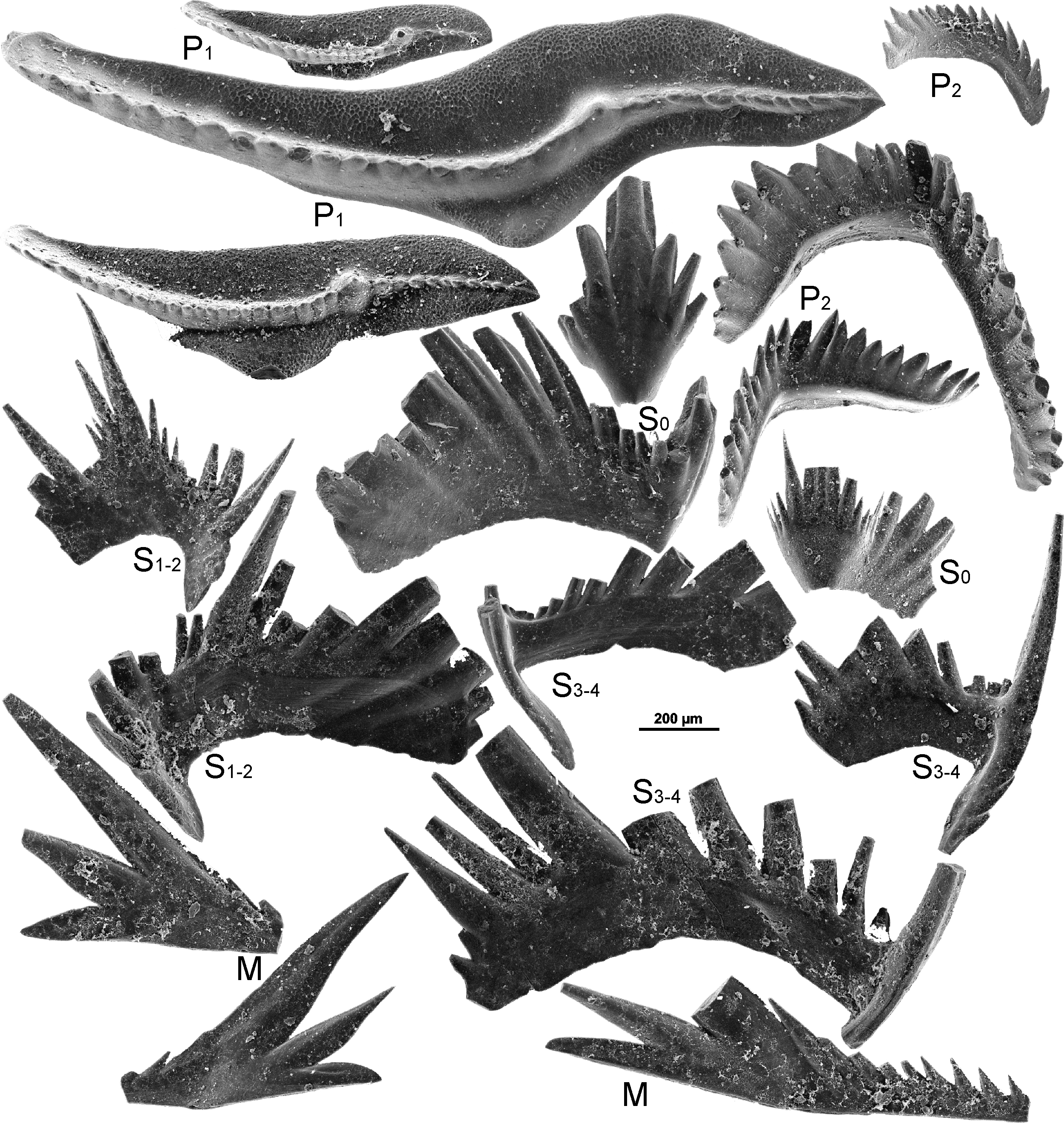Diagnoza
P1 elements very elongate and narrow, with triangular, aborally pointing anterior lobe; P2 elements sinuous, with rudimentary platform, S0 elements with prominent processes. Porównanie
C. falcata is the most abundant palmatolepidid species in the Holy Cross Mountains and its apparatus reconstruction leaves little doubt. Sample Ost-12 offers the largest material of this species being devoid of any other Conditolepis species. The origin of this species remains in doubt. The species emerged from an unknown source in the late K. crepida Zone at Kadzielnia together with equally cryptic C. klapperi. Although relatively little change is necessary in the morphology of the P1 element to derive it from that of C. glabra, the whole apparatus is quite different. It cannot be excluded that the lack of a platform in P2 elements is an ancestral feature inherited from C. lobicornis and early C. tenuipunctata and that the lineage of C. falcata is independent of that of C. glabra. Autekologia Występowanie geograficzne
All localities in Holy Cross Mountains. Zasięg czasowy
Common from the C. quadrantinodosa Zone, most abundant in the P. trachytera and L. styriacus Zones. Materiały muzealne
ZPAL: 41,366 specimens. Literatura
Dzik, J. 2006. The Famennian "Golden Age" of conodonts and ammonoids in the Polish part of the Variscan sea. Palaeontologia Polonica 63, 1-359. | 
